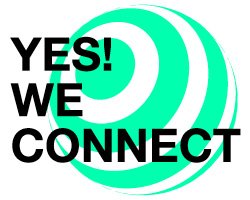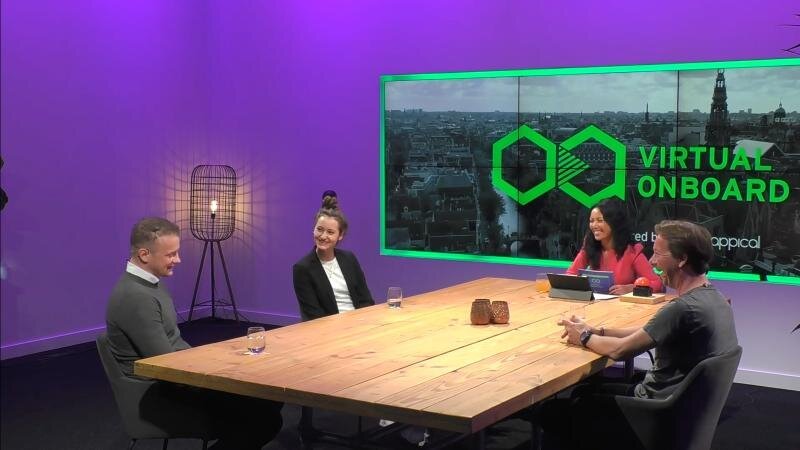8 Learnings of Onboard Week that set you up for success
Onboard Week 2020 was awesome! A whole week of talks and presentations on onboarding, filled with insights and experiences of a wide range of organizations like Lightyear, Heineken, Visma, Microsoft, SmartRecruiters, Appical, Wortell, Humanitas DMH, Rabobank, HelloFresh, Great Place To Work and Van Gogh Museum.
Reading back through my daily blogs I believe that these 8 learnings set you up for success. Here we go!
1. Take control 🎮
Tony de Graaf of Smart Recruiters pointed out that you should start with making a map of all stakeholders involved. And then include these stakeholders in your onboarding project team. Others like Bryan Peereboom of Wortell spoke about getting your board convinced of your onboarding plan. And for that you need to make your onboarding business case. What are the costs of a good onboarding program and what are the benefits.
2. Listen to your new hires 👂
In all the cases that have been presented about onboarding (by Lightyear, Heineken, Visma, Wortell, Humanitas DMH and Rabobank) we constantly heard that you have to listen to your new hires. What is important to them? What have you covered well? And what do they miss? Being open to feedback leads to valuable insights that you cannot come up with from behind your desk.
3. Involve managers 👨💻
Henk Ritmeester of Microsoft provided strong evidence of the fact that managers are crucial for a successful onboarding of new hires. If the manager is well connected in the company your new hires are productive quicker and tend to stay with your organization longer. This suggests that you should look into the connectivity of your managers too. Besides that, managers should play a role in the design of a good onboarding program. In the end it is their responsibility to successfully integrate new people in their teams (and HR can be a strong supporter of that).
4. Design with needs in mind 🎨
The best onboarding programs are build with the needs of the new hires in mind. If you understand the journey that new employees go through in your organization you can figure out what information and tools they could use at every moment of their journey. Peter Straatsma of Appical explained that they help their clients with an onboarding game to deep dive into the journey of new hires.
In doing so you might find that you have multiple types of people or roles in your organization. Bryan Peereboom showed us that at Wortell they currently work with 4 onboarding paths, one for every role. And he is already looking to stretch that to 20 paths, one for every team.
5. Make it personal 👫
Currently this is more important than ever. While most of us work from their homes due to Corona, it is very important to build in the human connection in your onboarding program. This can come from personal messages, postcards, buddies, gifts and goodies, virtual team sessions and a lot more. For Sanne van Leeuwen this is nothing new. At Humanitas DMH everything is personal, because personal is at the heart of their humanistic organization DNA.
The second angle to this learning is to create time and room for your new hires to show who they are. As an individual (what do you like to do in your free time?) and as a professional (what experience and expertise do you bring?).
6. Get your culture across 🏛️
From Jan Arnoud Ruiter of Rabobank and Hedwig Schaap and Ard-Jan Schinkelshoek of HelloFresh we learned that the culture of their organizations is the cornerstone of their success. Both organizations nurture their culture carefully and thus newcomers are quickly engaged in that culture. And again, this is also a two-way street. Also embrace the culture your new hires bring to the organization. Besides the speakers on the topic, Noortje Verwiel of Lightyear also showed some great examples of engineers from all over the world bringing their diverse cultural backgrounds with them in the workplace.
7. Evaluate and improve ✅
Your onboarding program is probably never finished. In a world that changes constantly, the needs of people change and new technologies arrive at a high pace. Herman Rolfers of Heineken made a strong case for being highly adaptive to change also in large scale organizations. He pointed out that the key to success for him is being in touch with your people all the time and quickly test and implement the latest technologies and ideas. Fail fast, learn quickly and move on.
8. Make onboarding into a party 🎊
Starting your career in a new organization is an emotional roller coaster. If the organization does not get it right 1/3rd of new hires leave within the first 2 months. But if you make the onboarding journey feel like a party, your new hire will be contributing quickly and stay with you for a while…
Want more learnings and details? Read the 5 blogs with the daily learnings of Onboard Week here. And A very big advantage of having a 100% virtual event is: we got everything on video! 📼. You can see all recordings of the event here.
See you next year!

